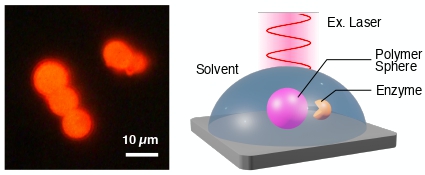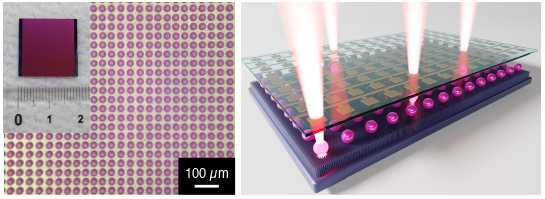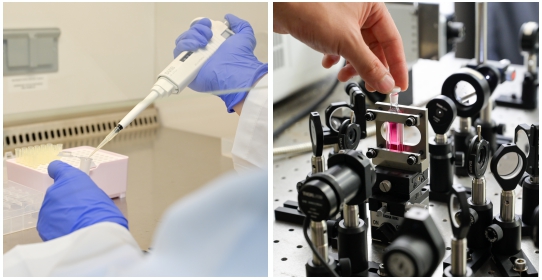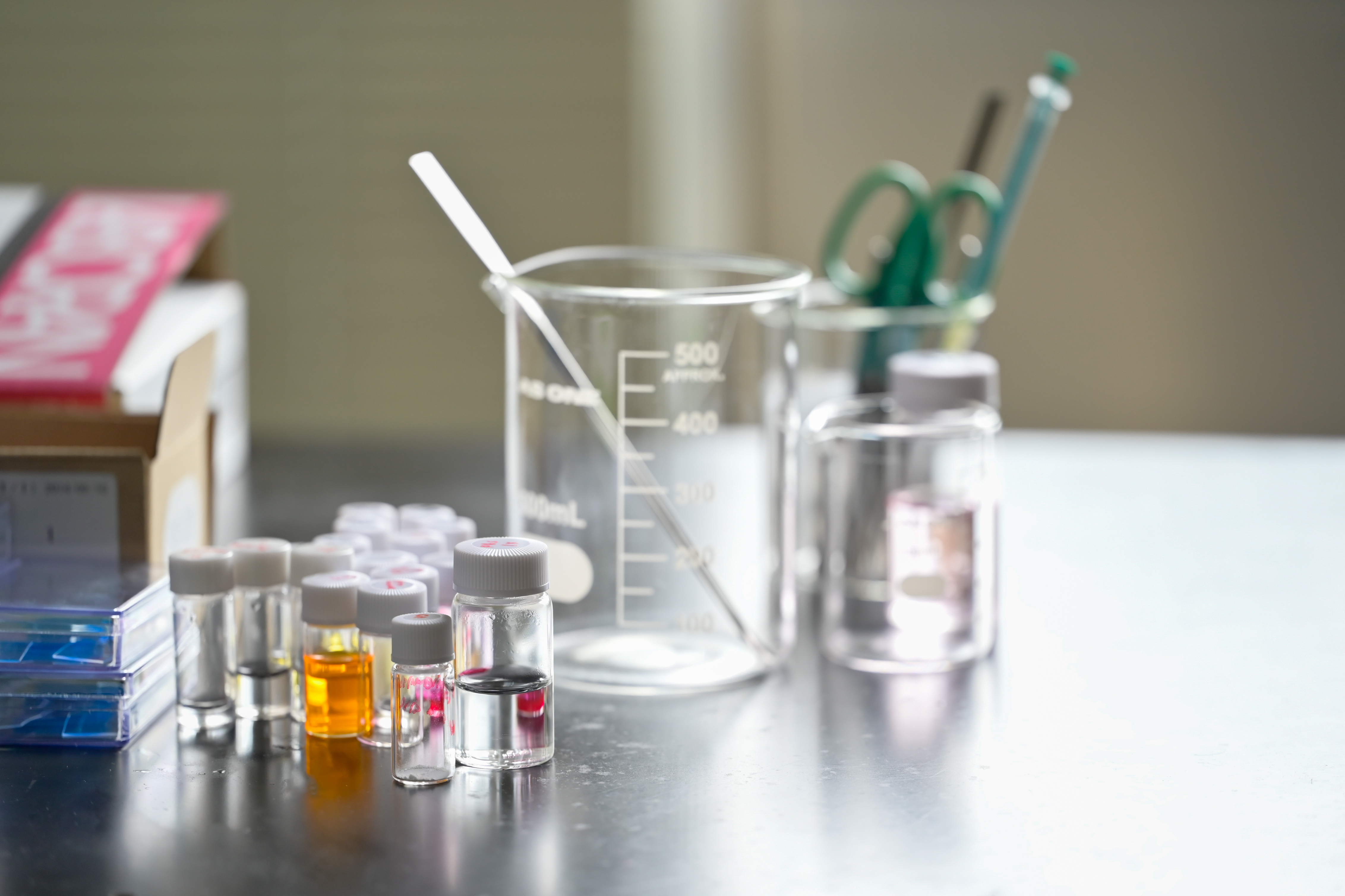Positions Available
Research
Topic 1: Molecular machines and sensors operative in human body
The human body is a complex and dynamic system, still full of mysteries waiting to be uncovered. One straightforward strategy for probing its inner workings is to implant miniature sensors capable of detecting biological signals and transmitting them as optical outputs. In our lab, we design and assemble micrometer-scale organic laser devices that function within physiological environments, aiming to enable precise, real-time diagnostics within the body.

- Chem. Commun. 2023, 59, 1477.
- Science 2022, 377, 673.
- ACS Appl. Polym. Mater. 2022, 4, 1065.
Related articles
Topic 2: Life-like flexible or fluidic laser devices
The human eye is an extraordinary optical system, offering high-resolution imaging along with automatic focus and angle adjustment. Inspired by these biological capabilities, we believe that soft, organic materials—rather than rigid, traditional components—hold the key to replicating such complex functions. Guided by this vision, our lab is developing flexible and fluidic laser devices, including optical fibers, lasers oscillators, and displays, that mimic the adaptability and performance of living systems.

- Adv. Mater. 2025, 37, 2413793.
- Laser Photonics Rev. 2023, 377, 2200874.
- Adv. Opt. Mater. 2022, 4, 2101808.
Related articles
Topic 3: Artificial Life
The boundary between artificial matter and living systems remains one of the most profound scientific mysteries. We aim to bridge this gap by assembling molecular systems that mimic the simplest forms of life. Our research focuses on chemical self-replication and evolution—key processes to underpin the origin of life. To approach this challenge, we integrate concepts and techniques from optical physics and molecular biology.

- On going






